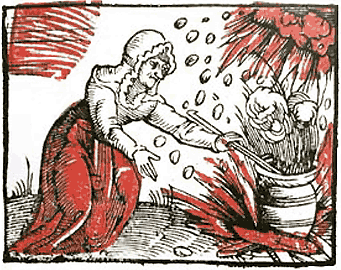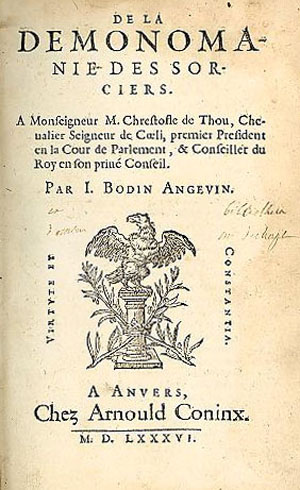.jpg) A Crisis of Gender Relations?
A Crisis of Gender Relations?
Image right: Hans Baldung Grien (1484/85-1545), Arrival at the Witches' Sabbath (1510). Gouache. Albertina Collection at Vienna. Image source: CGFA
I. Argument: Witch-Hunts and Patriarchy
A) Reordering Family: From Kin to Patrilineage
B) Reformation and Gender Politics
C) Gender and the Social Organization of Labor
II. Counter-Argument: Witch-Hunts and Patriarchy
A) Contrariety and the Necessity of Female Gendering
B) Moral Confusion
C) Witches and their Accusers
Graph: Sex of Accused Witches,
by Region
Graph: The Male Witches of Normandy, 1564-1659
Graph: Sex of Persons Imprisoned
for Witchcraft, Bavaria, 1608-1616

Frontispiece illustration from a pamphlet titled Erschreckliche Erzelung/ Vnnd Bekentnis der zeuberer vnd zeuberin/welche Kurtzlich verbrandt sein worden [A shocking tale and confession of the magicians and witches recently burned...] (Cologne, 1594).
 Witches as Neighbors
Witches as Neighbors